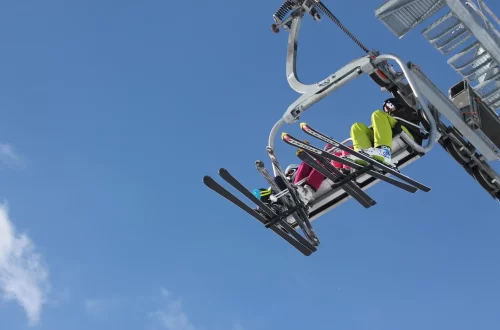
Exploring the Myths and Legends of Dragons in Fantasy Literature
Dragons have long been a source of fascination and inspiration in human storytelling, capturing the imagination of countless generations. These majestic creatures, often depicted as powerful and fearsome, embody both the awe of nature and the depths of human emotion. From ancient myths to contemporary fantasy literature, dragons serve as symbols of strength, wisdom, and sometimes destruction. Their portrayal varies significantly across cultures, with some viewing them as benevolent guardians, while others see them as malevolent forces to be vanquished.
The allure of dragons transcends mere fantasy; they represent a bridge between the known and the unknown, the mundane and the extraordinary. In literature, they often serve as pivotal characters that challenge heroes, test their resolve, and illuminate the complexities of good and evil. The narratives surrounding these mythical beasts offer rich landscapes for exploring themes of power, morality, and the human condition. As we delve into the myths and legends surrounding dragons, we uncover not only the evolution of these creatures in literature but also the societal values and beliefs that have shaped their portrayal throughout history.
Origins of Dragon Myths in Ancient Cultures
The mythology of dragons is deeply rooted in the ancient civilizations of the world. These creatures appear in various forms, often reflecting the culture’s values, fears, and aspirations. In many cultures, dragons were revered as symbols of creation and destruction, embodying the duality of nature itself. For instance, in ancient Mesopotamia, dragons were associated with water and chaos, seen as powerful entities that could bring both life and devastation. The famous Babylonian myth of Tiamat illustrates this duality, as she is both a creator and a destroyer, ultimately battling the god Marduk in a fierce confrontation that shapes the cosmos.
In contrast, Chinese mythology presents dragons in a more positive light. Here, they are often seen as benevolent beings that bring rain and fertility, symbolizing power and wisdom. The Chinese dragon is closely tied to the emperor, representing imperial authority and the connection between heaven and earth. Festivals celebrating dragons are common, and the creatures are depicted in art and literature as wise and noble beings, unlike their fearsome counterparts in Western tales.
The varying depictions of dragons across cultures highlight how these creatures serve as reflections of human emotions and societal values. In India, for instance, the dragon-like Naga is revered as a protector of springs and rivers, embodying the importance of water in sustaining life. Meanwhile, the European tradition often paints dragons as adversaries to be slain by heroic knights, representing the struggle between good and evil. This dichotomy reveals how dragons can symbolize not only the fears of the unknown but also the aspirations for heroism and virtue.
As we explore the origins of dragon myths, it becomes clear that these creatures have played a significant role in shaping cultural narratives. Their stories are not merely tales of fantastical beasts but rather reflections of human experience, embodying our collective hopes, fears, and moral dilemmas. The evolution of these myths over time continues to impact how dragons are perceived in modern literature, ultimately enriching our understanding of both the creatures and ourselves.
Dragons in Modern Fantasy Literature
In contemporary fantasy literature, dragons have undergone a transformation, becoming more complex and multifaceted characters. Authors have taken the traditional archetypes of dragons and reimagined them, infusing their narratives with depth and nuance. This shift reflects broader societal changes in how we view power, morality, and the nature of good and evil.
One of the most iconic modern representations of dragons can be found in J.R.R. Tolkien’s “The Hobbit.” Smaug, the dragon, is not just a mindless beast; he is a cunning and intelligent creature, embodying greed and the destructive nature of avarice. Smaug’s character serves as a foil to Bilbo Baggins, the unassuming hero, highlighting the theme of courage in the face of overwhelming danger. This nuanced portrayal invites readers to explore the complexities of morality, suggesting that even the most fearsome of creatures may possess human-like traits and vulnerabilities.
Similarly, in Christopher Paolini’s “Eragon,” dragons are portrayed as noble companions to their riders, possessing their own personalities and histories. The bond between the dragon Saphira and her rider Eragon transcends the typical master-servant dynamic, showcasing themes of friendship, loyalty, and mutual respect. This relationship challenges the traditional notion of dragons as mere antagonists, instead presenting them as integral characters in the hero’s journey.
Contemporary authors are also exploring the environmental and ethical implications of dragon lore. In works like Naomi Novik’s “Uprooted,” dragons are not only formidable creatures but also symbols of the natural world. They embody the consequences of human actions on the environment, urging readers to reflect on the balance between nature and civilization. This modern perspective allows for a rich tapestry of narratives that resonate with contemporary concerns, making dragons relevant to today’s readers.
The evolution of dragons in modern fantasy literature illustrates a shift towards more empathetic and complex portrayals. By moving beyond the simplistic dichotomy of good versus evil, authors invite readers to engage with the moral ambiguities of their stories. This evolution not only enhances the richness of the narratives but also reflects the changing nature of our understanding of power, responsibility, and the world around us.
The Symbolism of Dragons in Heroic Narratives
Dragons often occupy a pivotal role in heroic narratives, serving as formidable obstacles that heroes must confront to achieve their goals. This confrontation is not merely physical; it embodies deeper symbolic meanings related to personal growth, inner struggles, and the journey toward self-discovery. By battling dragons, heroes confront their fears, insecurities, and moral dilemmas, ultimately emerging transformed.
The classic hero’s journey, as described by Joseph Campbell, often involves a confrontation with a dragon or dragon-like creature. This archetypal challenge serves as a catalyst for the hero’s development. In literature, the dragon represents not just an external enemy but also the internal conflicts that the hero must face. For example, in “Beowulf,” the titular hero’s final battle with the dragon symbolizes his confrontation with mortality and the inevitable decline that comes with age. This encounter forces Beowulf to reconcile his past achievements with the reality of his present limitations, ultimately leading to his heroic sacrifice for the greater good.
Similarly, in the realm of modern fantasy, the notion of dragons as symbols of personal trials is prevalent. In works like “Harry Potter,” the dragon serves as a test of courage and ingenuity. Harry’s encounter with the dragon during the Triwizard Tournament is not merely a test of strength but also a rite of passage that forces him to confront his fears and embrace his identity as a wizard. This transformation is crucial for Harry, as it marks his evolution from a hesitant youth into a confident hero.
Furthermore, dragons in heroic narratives often embody the consequences of unchecked ambition and power. In many stories, the dragon hoards treasure, representing greed and the destructive nature of excessive desire. The hero’s quest to defeat the dragon often mirrors the struggle against these vices, highlighting the importance of humility, sacrifice, and self-awareness. This moral dimension adds depth to the narrative, encouraging readers to reflect on their own values and aspirations.
Ultimately, the symbolism of dragons in heroic narratives serves as a powerful tool for exploring the complexities of the human experience. By confronting these mythical creatures, heroes engage in a journey that transcends physical battles, delving into the realms of personal growth and moral introspection. As such, dragons remain an enduring and multifaceted presence in literature, inviting readers to ponder the challenges and triumphs of the human spirit.
Dragons as Cultural Reflections and Social Commentary
The portrayal of dragons in literature often serves as a mirror reflecting societal values, fears, and aspirations. By examining the context in which these stories are told, we can gain insight into the cultural and historical significance of dragons, as well as the underlying social commentary that accompanies their narratives.
In many cultures, dragons symbolize the struggle between civilization and chaos. In Western literature, the dragon is frequently depicted as a force of destruction that must be vanquished by the hero. This portrayal can be interpreted as a reflection of societal anxieties regarding the unknown and the chaotic elements of nature. The act of slaying the dragon often symbolizes the triumph of order over chaos, echoing humanity’s desire for control over their environment. This theme is prevalent in works ranging from medieval tales to modern fantasy epics, highlighting a consistent cultural narrative that emphasizes the importance of courage and heroism in the face of adversity.
Conversely, in Eastern cultures, dragons often embody wisdom and harmony with nature. The Chinese dragon, for example, is associated with rain and agricultural prosperity, symbolizing the interconnectedness of humanity and the natural world. This positive representation contrasts sharply with Western narratives, suggesting differing cultural attitudes towards nature and the role of humanity within it. By examining these differences, we can better understand how dragons serve as cultural icons that encapsulate the values and beliefs of their respective societies.
Moreover, dragons can also serve as a vehicle for exploring contemporary issues, such as environmental degradation and the consequences of unchecked technological advancement. In works of speculative fiction, dragon imagery is often employed to critique human hubris and the ecological crises resulting from industrialization. By reimagining dragons in this context, authors can address pressing social and environmental issues, encouraging readers to reflect on their relationship with the world around them.
In summary, dragons in literature extend beyond mere fantasy; they encapsulate deep-seated cultural beliefs and societal concerns. By analyzing their portrayal, we can uncover valuable insights into the human experience, revealing the ways in which these mythical creatures resonate with our collective consciousness. As dragons continue to evolve in modern storytelling, they remain powerful symbols that challenge us to consider our values and the world we inhabit.
In conclusion, the myths and legends of dragons in fantasy literature are rich with meaning and complexity. From their origins in ancient cultures to their modern reinterpretations, dragons serve as enduring symbols that reflect our deepest fears, aspirations, and moral dilemmas. As we continue to explore these mythical creatures, we gain not only a greater appreciation for the art of storytelling but also a deeper understanding of ourselves and the world we inhabit.




